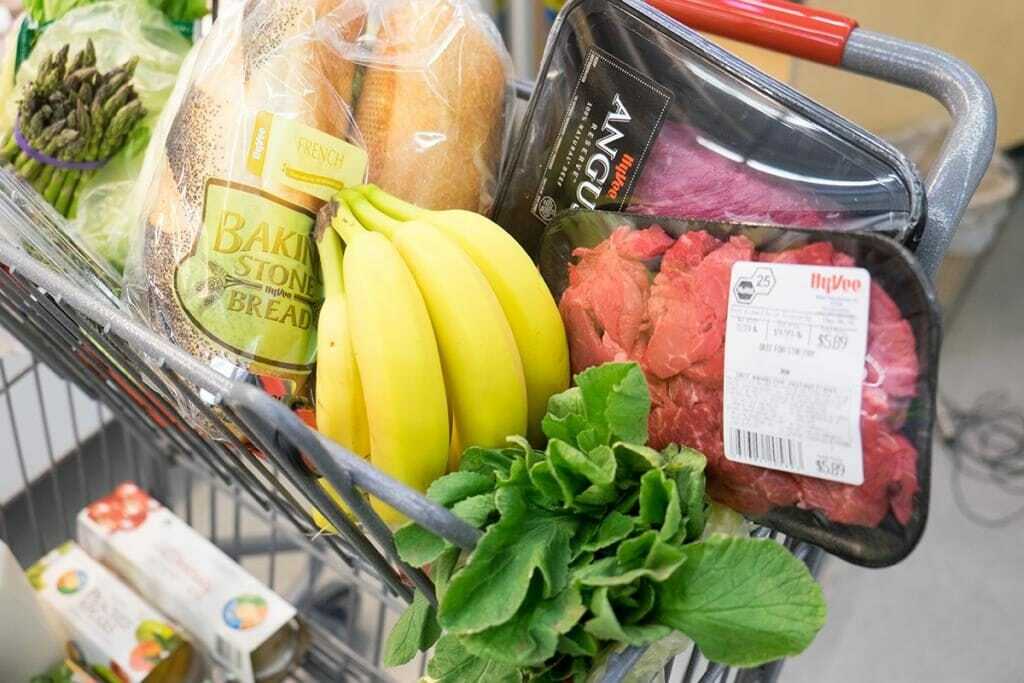by Kelly Visser, Iowa Soybean Association agricultural awareness manager
Some days, it can feel like connecting with consumers is nearly impossible.
With each trendy diet, noisy advertisement or misinformed social media comment, it seems like the distance between the 2% who farm and 98% who don’t is widening.
In my consumer-facing role with the Iowa Soybean Association (ISA) and Iowa Food & Family Project (Iowa FFP), I work to unite Iowans in conversations about modern agriculture. I work to showcase the work farmers do to raise safe, nutritious products to feed their families, neighbors and the world.
Each time I speak with a farmer, their question to me remains the same: “What do consumers really want to know about farming and how can I connect with them?” This leadership and openness are the first steps in shrinking the seemingly significant divide between consumers and farmers.
And the bridge goes both ways. More than 130,000 Iowa consumers (that’s the combined population of Iowa City, Cedar Falls and Boone!) are engaging with Iowa FFP content, activities and events. They’re hungry to meet farmers and have authentic conversations about how food is grown and raised.
Each year, Iowa FFP conducts a Consumer Pulse Survey among food purchasers in the state. Now in its eighth year, the survey gauges grocery shopping habits, food label influence and attitudes toward farming.
These objective survey findings shape Iowa FFP’s approach to connecting farmers and consumers. And best of all, these findings can help farmers answer the question: “What do consumers really want to know about farming and how can I connect with them?”
Here are three key takeaways from the most recent survey:
- Iowans are fans of farmers: 83% of grocery shoppers agreed they have a positive opinion of farming in Iowa. In fact, 9 in 10 agree that farmers are on the right track with building strong communities and providing safe foods.
- Trends aren’t that trendy: Only 3% of food purchasers shop for groceries online. Almost 9 in 10 shoppers agree they are unlikely to replace meat with imitation meat for any given meal.
- Mistrust in food marketing: Half of shoppers seek information on front-of-package food marketing (call outs like “organic,” “hormone-free” or “all natural”), with 83% finding it misleading. Since 2016, the purchasing influence of front-of-package marketing has dropped from 32% to 19%. Food quality and price of food top the list as the most important factors when grocery shopping.
The November 2019 survey had 597 responses and 307 were engaged with Iowa FFP as monthly newsletter subscribers. Respondents’ age groups, income levels, education levels and geographic regions closely follow the state’s population, resulting in a 4% margin of error. Blue Compass, a digital marketing agency in West Des Moines, conducted the survey analysis from data collected through Dynata’s business-to-consumer panel.
For additional survey insights and resources that connect farmers and consumers, visit iowafoodandfamily.com.
Beef Sirloin & Garlic Butter Mushroom Sheet Pan Dinner
Ingredients
For the beef roast and potatoes:
- 1 petite sirloin beef roast (2-2 ¼ lbs.), tied in 3” increments with cotton kitchen twine
- 2 tablespoons butter, softened
- 1 teaspoon fresh rosemary, minced or 1/2 teaspoon dried rosemary
- 1 teaspoon fresh thyme, minced or 1/2 teaspoon dried thyme
- 2 1/2 teaspoons seasoned salt, divided
- 1 teaspoon ground black pepper, divided
- 2 teaspoons soybean oil (vegetable oil)
- 12 b-sized potatoes, washed and halved (slightly bigger than a golf ball)
For the green beans and mushrooms:
- 1 lb. green beans, trimmed
- 1 lb. cremini mushrooms
- 4 tablespoons butter, melted
- 5 cloves garlic, smashed then sliced
- 2 teaspoons fresh thyme or 1 teaspoon dried thyme
- 1/2 teaspoon sea salt
- 1/4 teaspoon freshly ground black pepper, to taste
Directions
Preheat oven to 400 degrees F.
Lightly oil a baking sheet or coat with nonstick spray. Remove beef roast from refrigerator. Arrange beef in center of baking sheet. Sprinkle roast evenly with fresh rosemary, thyme, 1 1/2 teaspoons seasoned salt and 1/2 teaspoon black pepper. Rub butter onto beef roast evenly over herbs and seasoning.
In a large mixing bowl, add 2 teaspoons soybean oil and remaining 1 teaspoon seasoned salt and 1/2 teaspoon black pepper. Toss potatoes in oil and seasoning mixture. Spread on one side of baking sheet.
Roast beef and potatoes at 400 degrees F for 20 minutes.
Meanwhile, trim green bean stems and clean mushrooms. In a large mixing bowl that potatoes were mixed in, whisk together melted butter, garlic, thyme, salt and pepper. Toss green beans and mushrooms in mixture.
At the end of the first 20-minute baking time, remove beef and potatoes from oven. Place mushrooms and green beans in a single layer on the prepared baking sheet along with potatoes and beef. Move beef over if necessary to crowd potatoes a bit.
Bake for an additional 30 minutes or until beef roast registers 130* degrees F in the center of the large part of the roast on a digital instant read thermometer. Allow beef roast to rest 5 minutes, remove twine, slice at desired thickness and dip slices in remaining sheet pan juices before plating. Serve with potatoes, mushrooms and green beans.
*130 degrees F when pulled from oven will carry over to 135 degrees F, medium rare. For medium doneness, pull roast at 140 degrees F as it will carry over to 145 degrees F.
Nutrition per serving: 647 Calories, 54.6 g Carbohydrate, 32 g Fat, 8 g Saturated Fat, 42 g Protein, 7 g Fiber, 136 mg Sodium
Recipe Notes
Recipe from Cristen Clark, Food & Swine
Makes 4 to 6 servings
_________________
About the Iowa Food & Family Project
The Iowa Food & Family Project is powered by nearly 35 partners, including Latham Hi-Tech Seeds, with a goal to help Iowans become more confident about how and where their food is grown. For more information, visit iowafoodandfamily.com.

